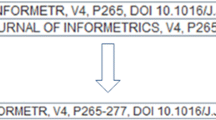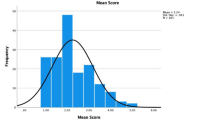Abstract
The investigators studied author research impact using the number of citers per publication an author’s research has been able to attract, as opposed to the more traditional measure of citations. A focus on citers provides a complementary measure of an author’s reach or influence in a field, whereas citations, although possibly numerous, may not reflect this reach, particularly if many citations are received from a small number of citers. In this exploratory study, Web of Science was used to tally citer and citation-based counts for 25 highly cited researchers in information studies in the United States and 26 highly cited researchers from the United Kingdom. Outcomes of the tallies based on several measures, including an introduced ch-index, were used to determine whether differences arise in author rankings when using citer-based versus citation-based counts. The findings indicate a strong correlation between some citation and citer-based measures, but not with others. The findings of the study have implications for the way authors’ research impact may be assessed.




Similar content being viewed by others
Notes
We would have liked to have used c-index, but this appears to have been previously proposed in a different context (Wang et al. 2008).
References
Adkins, D., & Budd, J. (2006). Scholarly productivity of U.S. LIS faculty. Library and Information Science Research, 28, 374–389.
Ajiferuke, I. (1991). A probabilistic model for the distribution of authorships. Journal of the American Society for Information Science, 42, 279–289.
Bordons, M., & Gomez, I. (2000). Collaboration networks in science. In B. Cronin & H. B. Atkins (Eds.), The web of knowledge: A Festschrift in honor of Eugene Garfield (pp. 197–213). Medford, NJ: Information Today.
Brooks, T. A. (1985). Private acts and public objects: An investigation of citer motivations. Journal of the American Society for Information Science, 36, 223–229.
Cronin, B. (2001). Hyperauthorship: A postmodern perversion or evidence of a structural shift in scholarly communication practices? Journal of the American Society for Information Science and Technology, 52(7), 558–569.
Cronin, B., & Meho, L. (2006). Using the h-index to rank influential information scientists. Journal of the American Society for Information Science and Technology, 57(9), 1275–1278.
Cronin, B., & Overfelt, K. (1993). Citation-based auditing of academic performance. Journal of the American Society for Information Science, 45, 61–72.
Cronin, B., & Shaw, D. (2002). Identity-creators and image-makers: Using citation analysis and thick description to put authors in their place. Scientometrics, 54(1), 31–49.
Dieks, D., & Chang, H. (1976). Differences in impact of scientific publications: Some indices derived from a citation analysis. Social Studies of Science, 6, 247–267.
Egghe, L., Rousseau, R., & Van Hooydonk, G. (2000). Methods for accrediting publications to authors or countries: Consequences for evaluation studies. Journal of the American Society for Information Science, 51(2), 145–157.
Garfield, E. (1962). Can citation indexing be automated? Essays of an Information Scientist, 1, 84–90.
Garfield, E., & Sher, I. H. (1963). New factors in the evaluation of scientific literature through citation indexing. American Documentation, 14(3), 195–201.
Goffman, W. (1966). Mathematical approach to the spread of scientific ideas—The history of mast cell research. Nature, 212, 449–452.
Goffman, W., & Newill, V. A. (1964). Generalization of epidemic theory: An application to the transmission of ideas. Nature, 204, 225–228.
Hirsch, J. E. (2005). An index to quantify an individual’s scientific research output. Proceedings of the National Academy of Sciences, 102, 16569–16572.
Laudel, G. (2002). What do we measure by coauthorships? Research Evaluation, 11, 3–15.
Lindsey, D. (1989). Using citation counts as a measure of quality in science: Measuring what’s measurable rather than what’s valid. Scientometrics, 15(3–4), 189–203.
MacRoberts, M. H., & MacRoberts, B. R. (1989). Problems of citation analysis: A critical review. Journal of the American Society for Information Science, 40(5), 342–349.
Oppenheim, C. (2007). Using the h-index to rank influential British researchers in information science and librarianship. Journal of the American Society for Information Science and Technology, 58, 297–301.
Persson, O., Glänzel, W., & Danell, R. (2004). Inflationary bibliometric values: The role of scientific collaboration and the need for relative indicators in evaluative studies. Scientometrics, 60(3), 421–432.
Phelan, T. J. (1989). A compendium of issues for citation analysis. Scientometrics, 45(1), 117–136.
Smith, L. C. (1981). Citation analysis. Library Trends, 30, 83–106.
Snyder, H., & Bonzi, S. (1998). Patterns of self-citation across disciplines (1980–1989). Journal of the American Society for Information Science, 48, 431–435.
Wang, W., Mokhtar, M., & Macaulay, L. (2008). C-index: Trust depth, trust breadth, and a collective trust measurement. In WebScience’08. Retrieved March 24, 2009 from http://users.ecs.soton.ac.uk/dem/workshops/webscience08/papers/websci08-wang.pdf.
White, H. D. (2001). Authors as citers over time. Journal of the American Society for Information Science and Technology, 52, 87–108.
White, M. D., & Wang, P. (1997). A qualitative study of citing behavior: Contributions, criteria, and metalevel documentation concerns. Library Quarterly, 67, 122–154.
Zhao, D. Z. (2006). Towards all-author co-citation analysis. Information Processing & Management, 42(6), 1578–1591.
Acknowledgement
We would like to thank Nicole Johnson for providing research assistance.
Author information
Authors and Affiliations
Corresponding author
Rights and permissions
About this article
Cite this article
Ajiferuke, I., Wolfram, D. Citer analysis as a measure of research impact: library and information science as a case study. Scientometrics 83, 623–638 (2010). https://doi.org/10.1007/s11192-009-0127-6
Received:
Published:
Issue Date:
DOI: https://doi.org/10.1007/s11192-009-0127-6




